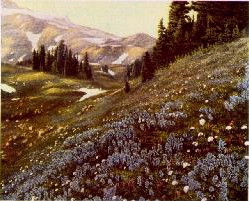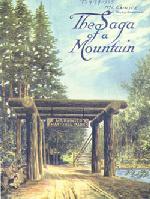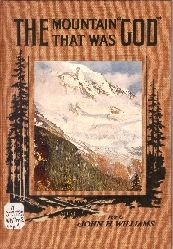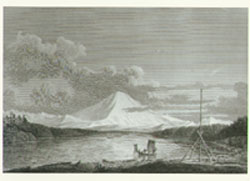The Spirit of the Mountain
Mount Rainier inspires legend and poetry as countless people have struggled to define the mountain's allure and danger in words and images.
 "Out of the forest at last there stood the mountain, wholly unveiled, awful in bulk and majesty, filling all the view like a separate, newborn world, yet withal so fine and so beautiful it might well fire the dullest observer to desperate enthusiasm." --John Muir, Steep Trails, p. 264.
"Out of the forest at last there stood the mountain, wholly unveiled, awful in bulk and majesty, filling all the view like a separate, newborn world, yet withal so fine and so beautiful it might well fire the dullest observer to desperate enthusiasm." --John Muir, Steep Trails, p. 264.
The region's Native Americans had many legends and associations that contributed to the spirit and culture surrounding Mount Rainier. These stories included the warning given to Stevens and Van Trump before their ascent to the summit. This version, translated and remembered from the Chinook by General Stevens, is printed in Edmond Meany's Mount Rainier: a record of explorations, 1916.
 "Without snow on top or verdant trimming of fir below, without its ice-cream-cone shape in the sky, Rainier would still inspire. We are drawn to the quirks of the planet, those deformities of landscape which mock convention...The old forests which cloak these cones and the wild streams which scramble from their glacial tops are mere façade...we look at them and see beauty, the perfect picture of the Northwest." --Tim Egan, The Good Rain, 1990, p. 147
"Without snow on top or verdant trimming of fir below, without its ice-cream-cone shape in the sky, Rainier would still inspire. We are drawn to the quirks of the planet, those deformities of landscape which mock convention...The old forests which cloak these cones and the wild streams which scramble from their glacial tops are mere façade...we look at them and see beauty, the perfect picture of the Northwest." --Tim Egan, The Good Rain, 1990, p. 147 "The highest and most imposing mountain in our country, outside of Alaska, is Mount Rainier - Tahoma, the Indians called it - "the mountain that was God." It is the representative of the Cascades, and the crown of the Puget Sea. One's first view of Rainier, or Tacoma, can never be forgotten.... It is the chosen Apollo among these giant cones that show themselves to men, -- rising in one majestic sweep from the surge of the Puget Sea to the stars of Heaven...." --John Wesley Carter, From the Heights, 1911
"The highest and most imposing mountain in our country, outside of Alaska, is Mount Rainier - Tahoma, the Indians called it - "the mountain that was God." It is the representative of the Cascades, and the crown of the Puget Sea. One's first view of Rainier, or Tacoma, can never be forgotten.... It is the chosen Apollo among these giant cones that show themselves to men, -- rising in one majestic sweep from the surge of the Puget Sea to the stars of Heaven...." --John Wesley Carter, From the Heights, 1911 "It is so real this mountain, yet so unreal, that one may never altogether know it, for there is a indescribable ghostliness about it, that suggests a living double personality..." -- The Saga of a Mountain, Tacoma Eastern Railroad pamphlet, 1911
"It is so real this mountain, yet so unreal, that one may never altogether know it, for there is a indescribable ghostliness about it, that suggests a living double personality..." -- The Saga of a Mountain, Tacoma Eastern Railroad pamphlet, 1911